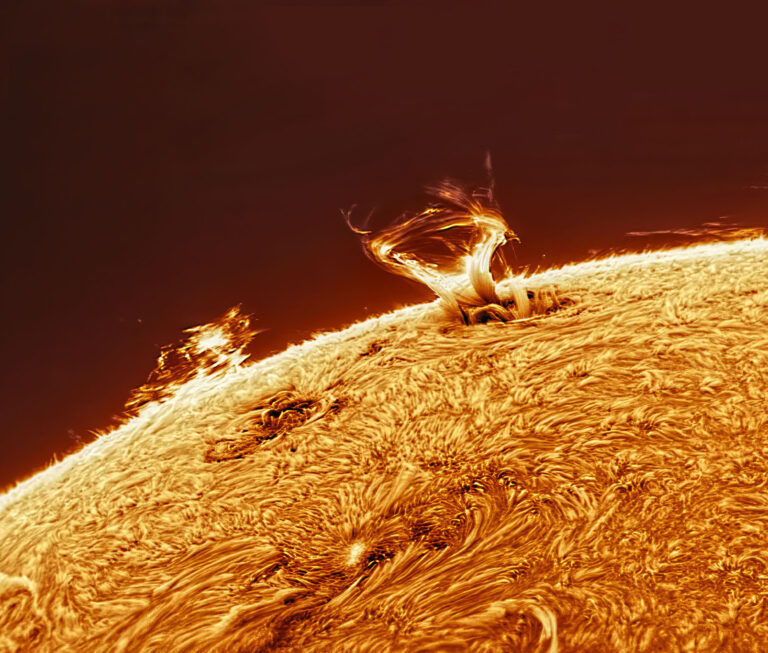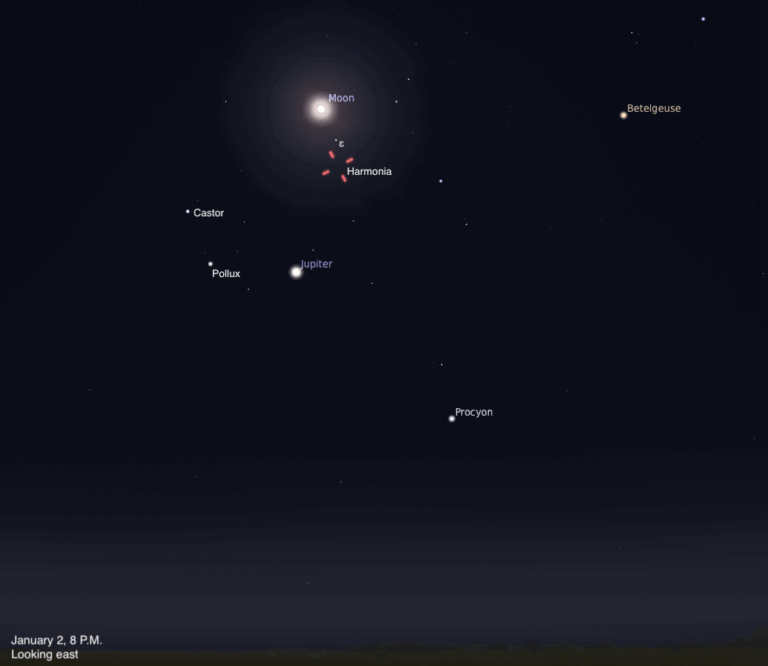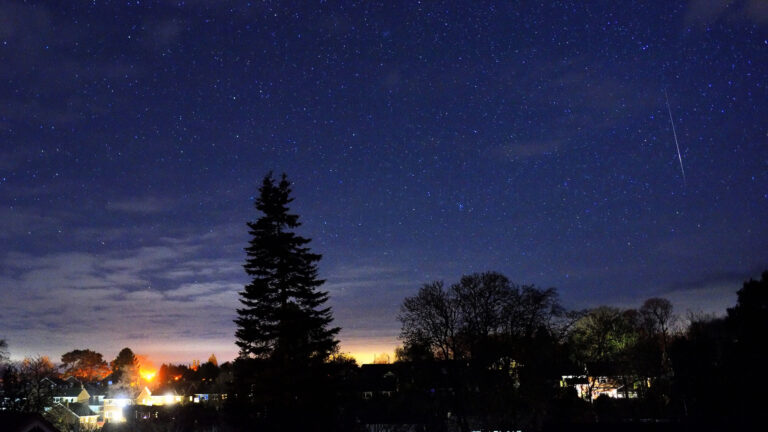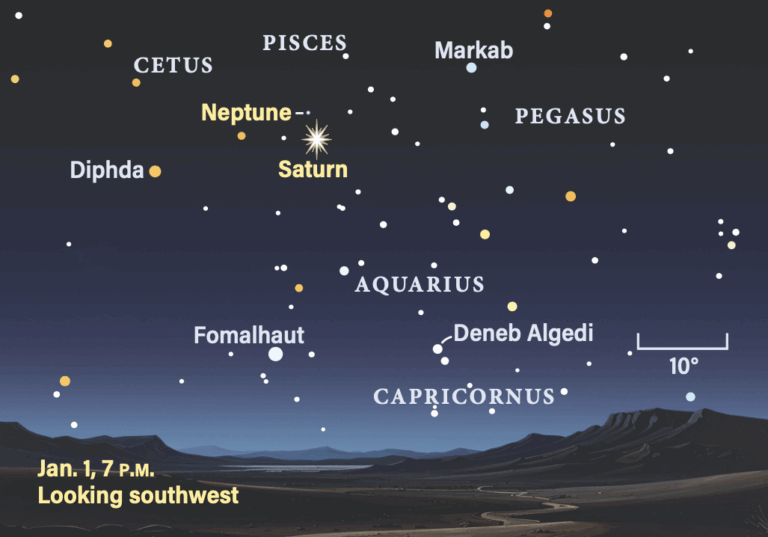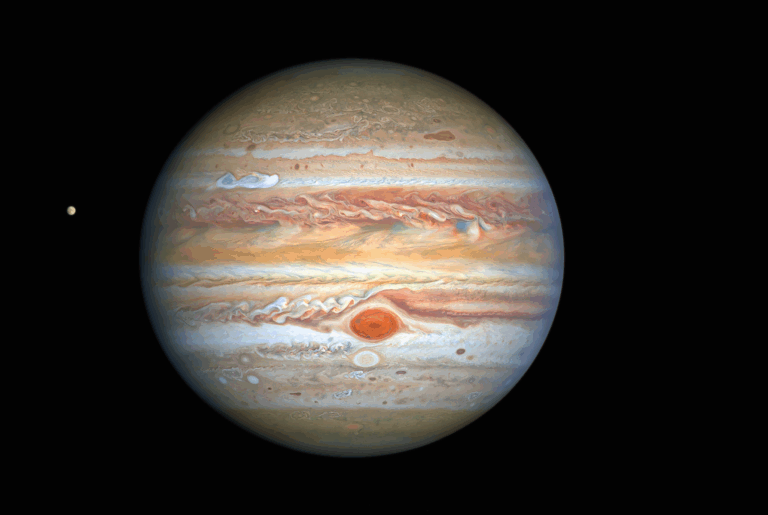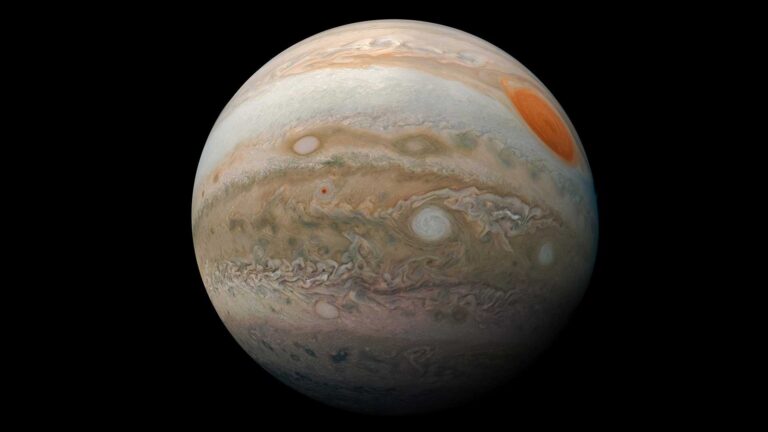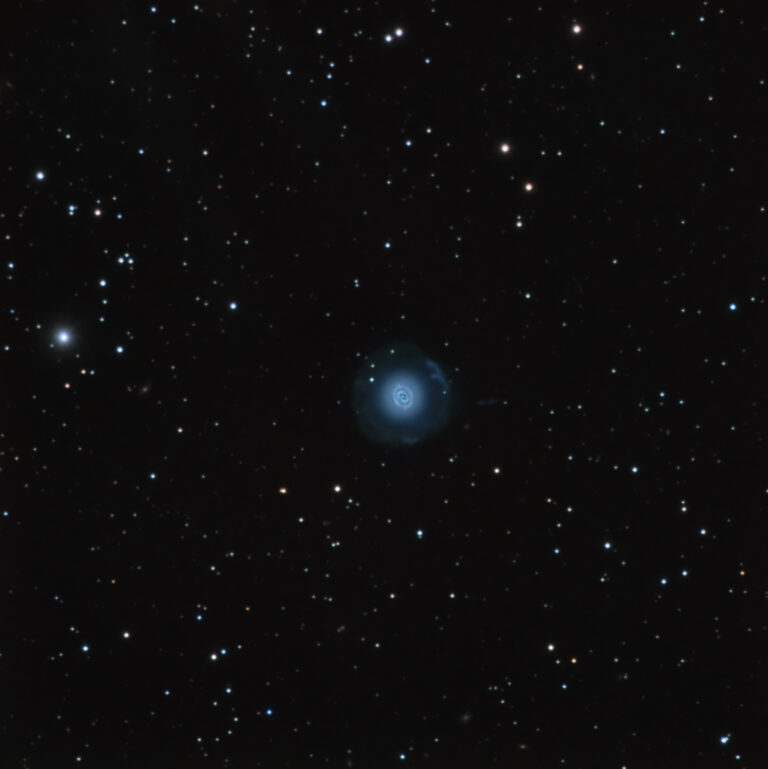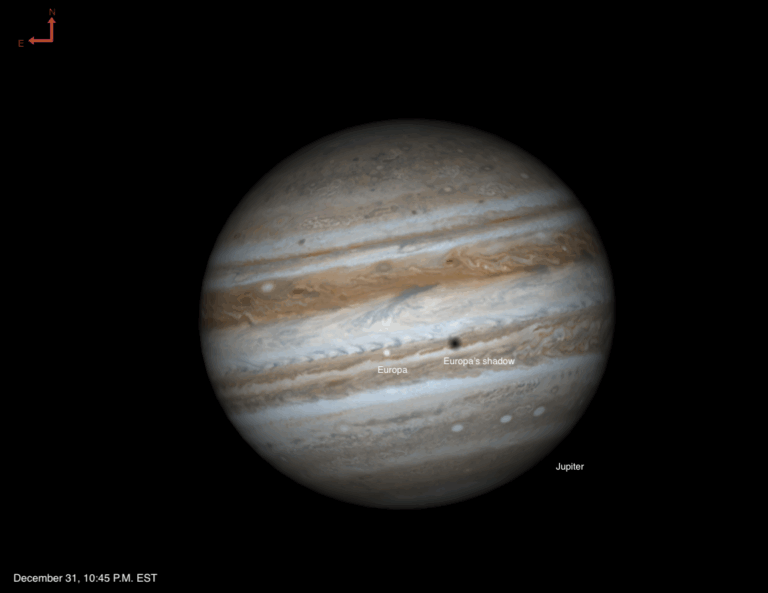Key Takeaways:
With the calendar turning to December, most people’s thoughts naturally turn to the onset of winter. As if on cue, the coldest season’s most conspicuous constellation now appears prominent in the evening sky. Orion the Hunter lies low in the east at 8 p.m. local time and climbs to its peak due south shortly after midnight. Look for three 2nd-magnitude stars in a short line that form the Hunter’s belt. The constellation’s brightest stars are ruddy Betelgeuse and blue-white Rigel.
Saturday, December 2
This week offers you a final chance to see Mercury and Saturn in the evening sky. Shortly after the Sun sets this evening, look low in the southwest for the planet pair. For observers at 40° north latitude, the two lie about 5° above the horizon 30 minutes after sundown. Binoculars will help you to find magnitude 0.2 Mercury and magnitude 0.5 Saturn in the twilight glow. The ringed planet lies just 3° to Mercury’s upper right.
Sunday, December 3
Full Moon officially arrives at 10:47 a.m. EST, though it will look completely illuminated all night among the background stars of Taurus the Bull. The Full Moon rises close to sunset, appears highest in the south around midnight local time, and sets as the Sun comes up. Our satellite reaches its Full phase just 17 hours before its closest approach to Earth during its monthly orbit. The coincidence between these two events makes this the largest Full Moon of 2017, and you can expect to hear the phrase “Super Moon” used to describe it. Just how special is it? This Full Moon spans 33.4′, 7 percent larger than average. Most people won’t notice that small of a difference, but you can bet a lot of them will head out this evening, see the bright Moon hanging low above the horizon, and be amazed at its size. But this is an illusion — viewing the Moon near familiar foreground objects tricks the mind into thinking it looks bigger.
The Geminid meteor shower gets underway this week. Although the shower doesn’t peak until the night of December 13/14, you should start to see some Geminids during the overnight hours. To tell a Geminid meteor from a random dust particle burning up in Earth’s atmosphere, trace the streak of light’s path backward. A shower meteor will appear to originate from the constellation Gemini the Twins.
The Moon reaches perigee, the closest point in its orbit around Earth, at 3:46 a.m. EST. It then lies 222,135 miles (357,492 kilometers) away from us.
Tuesday, December 5
Mars stands out in the southeastern sky before dawn this week. The magnitude 1.7 Red Planet rises nearly four hours before the Sun and appears 25° high as twilight starts to paint the sky. It resides among the background stars of Virgo, some 5° to the left of the Maiden’s brightest star, 1st-magnitude Spica. Notice the stark color contrast between the orange-red planet and the blue-white star. Unfortunately, the view through a telescope proves disappointing — Mars spans just 4″ and shows no detail.
Wednesday, December 6
The second-brightest asteroid of 2017 puts on a nice show during December. Minor planet 7 Iris rides high in the evening sky among the background stars of Aries the Ram. It glows at 8th magnitude and should be relatively easy to spot through binoculars even from the suburbs. This evening, you can locate Iris 1° southeast of the magnitude 5.9 star 4 Arietis.
Thursday, December 7
Although people in the Northern Hemisphere won’t experience the shortest day of the year for another two weeks (at the winter solstice December 21), those at 40° north latitude will see the Sun set earlier today than at any other time this year. Tomorrow’s sunset will arrive one second later and, by the solstice, our star will set three to four minutes later than today. The date of earliest sunset depends on latitude — the farther north you live, the closer it occurs to the solstice.
Head outside before dawn and you’ll find Jupiter blazing low in the southeast. The giant planet rises nearly three hours before the Sun and climbs 20° high an hour before sunup. Jupiter shines at magnitude –1.7, which makes it the brightest point of light in the night sky, and resides among the much dimmer stars of the constellation Libra. A telescope reveals the planet’s 32″-diameter disk.
Saturday, December 9
A lone bright star now hangs low in the south during early evening. First-magnitude Fomalhaut — often called “the Solitary One” — belongs to the constellation Piscis Austrinus the Southern Fish. From mid-northern latitudes, it climbs 20° above the horizon at its best. How solitary is Fomalhaut? The nearest 1st-magnitude star to it, Achernar at the southern end of Eridanus the River, lies some 40° away.
Sunday, December 10
Last Quarter Moon occurs at 2:51 a.m. EST. It poked above the eastern horizon shortly before midnight local time yesterday evening and climbs highest in the south as twilight starts to paint the sky today. The half-lit Moon spends the morning hours in the southern part of the constellation Leo the Lion.




